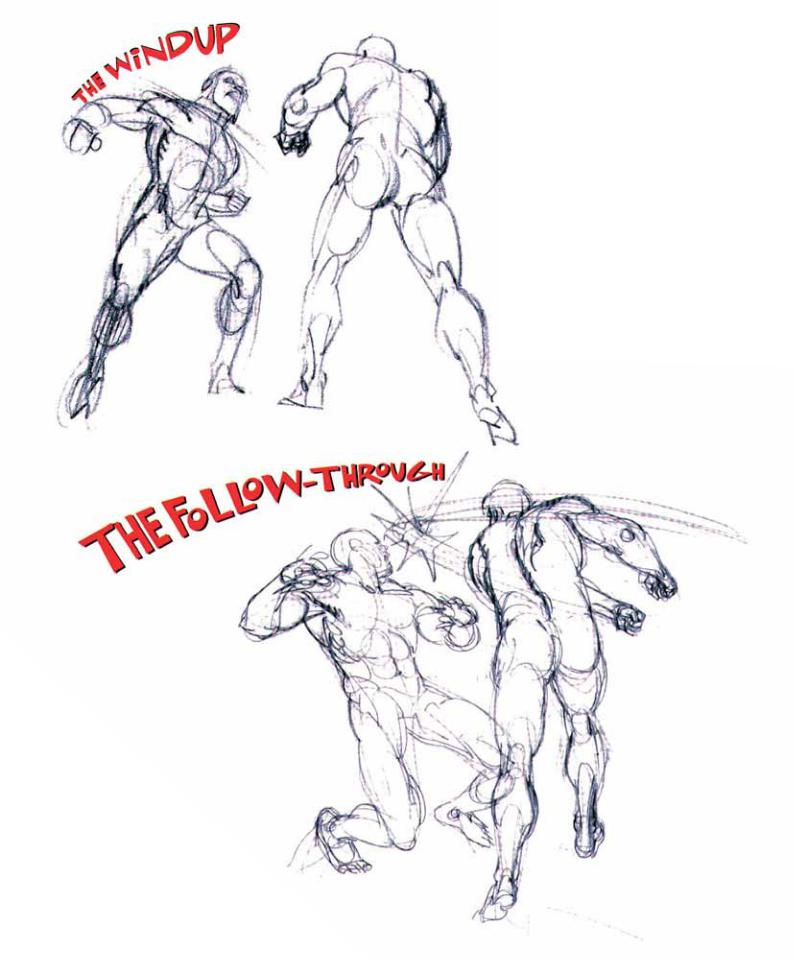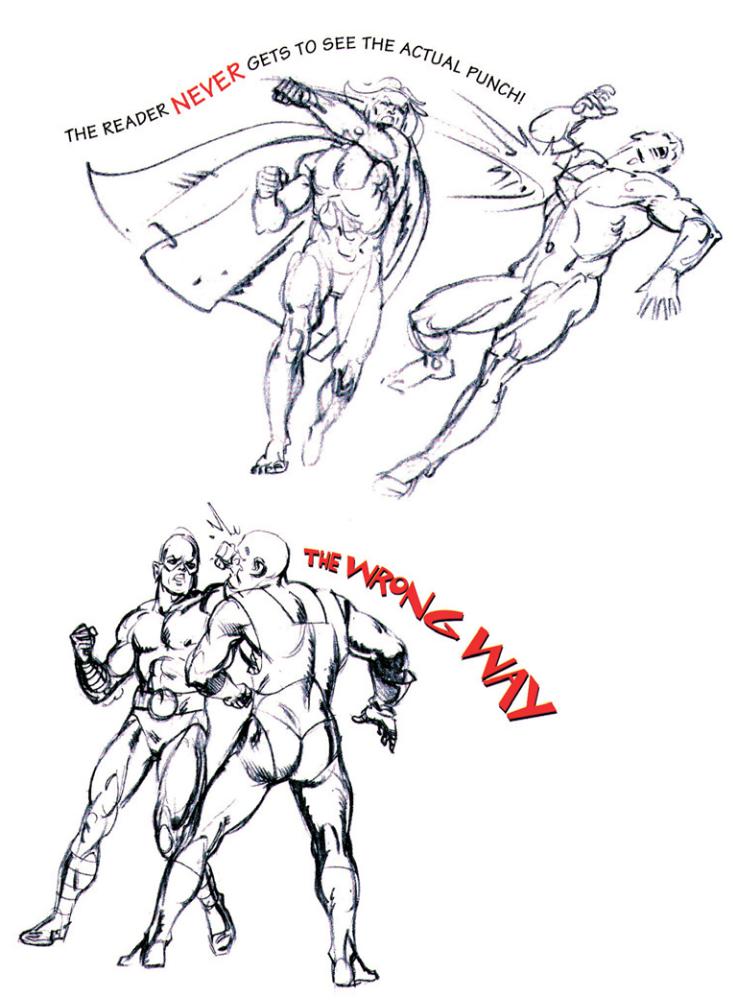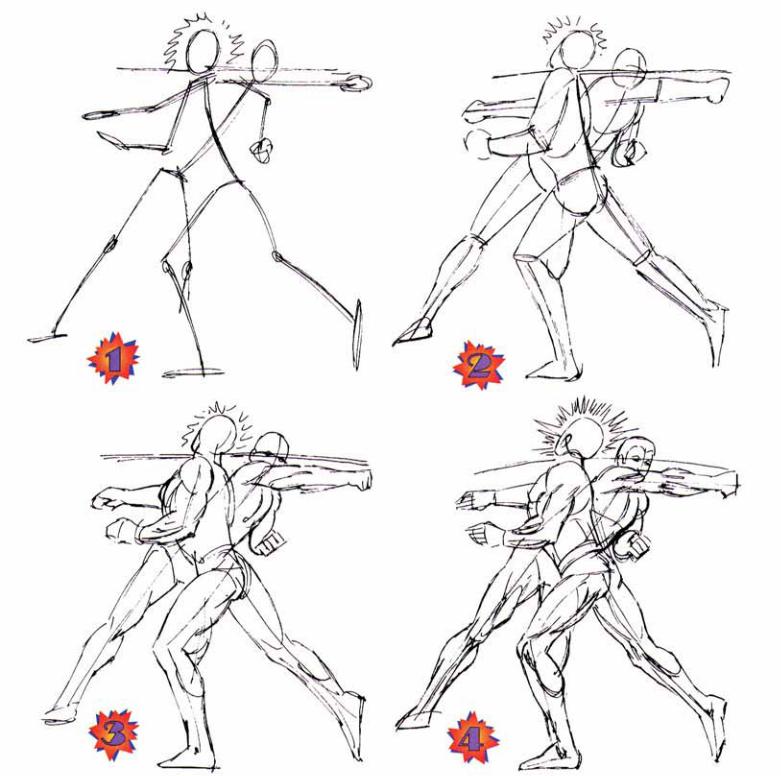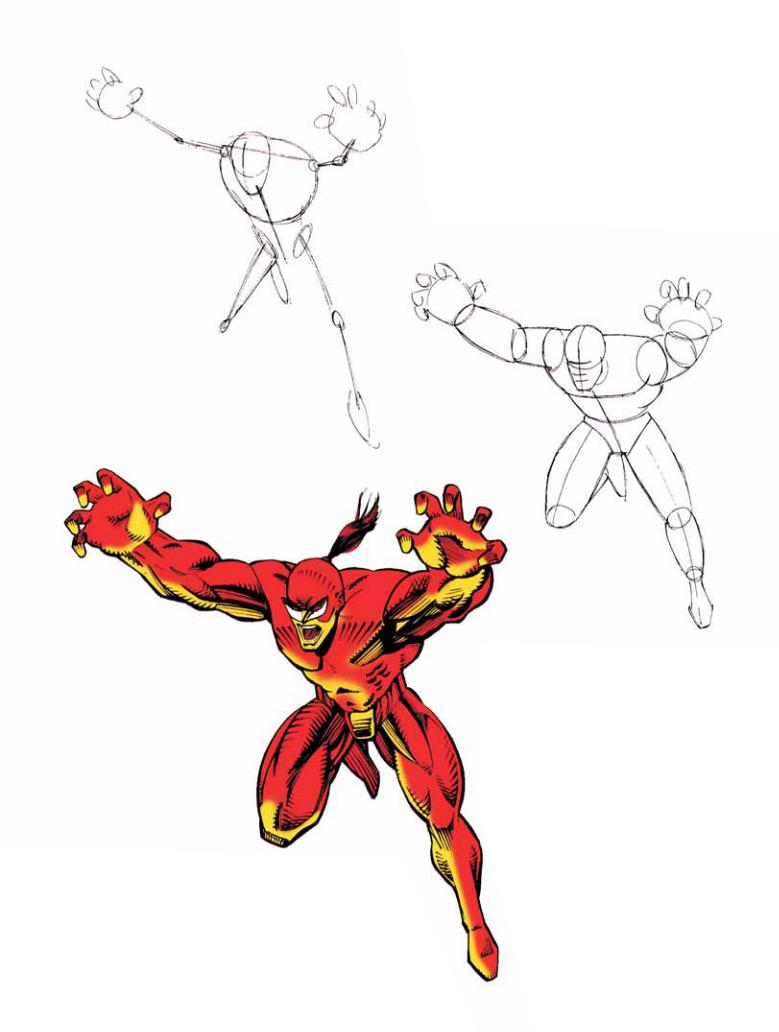
- •Acknowledgments
- •Contents
- •Introduction
- •The Contributing Artists
- •Sketching Different Head Shapes
- •Facial Features
- •How to Draw Hair
- •Popular Comic Book Expressions
- •Grimaces
- •Anatomical Proportions
- •Body Basics
- •Building an Action Pose
- •The Action Figure, Step By Step
- •The Heroic Female Figure
- •Anatomy of the Hand
- •Basic Hand Poses
- •Heroic Hands
- •Female Hands
- •Turnarounds
- •Devastating Punches
- •Clean Punches
- •The Lunge Attack
- •Leaning Into the Punch or Kick
- •The Judo Shoulder Throw
- •David vs. Goliath
- •The Balance of Power
- •The Renegade Soldier
- •Sword-and-Sorcery Villains
- •Forces of Evil
- •Inventing a Villain
- •Beastly Villains
- •Hollywood Heavies
- •Dressed to Kill
- •Unearthly Creatures
- •Comic Book Beauties Then...
- •Femme Fatales Yesterday...
- •...And Today
- •Denizen of the Street
- •Beauty in All Shapes and Colors
- •Drawing from Photos
- •Good Gal Heroes
- •Strong But Sexy
- •A Hint About Skintight Costumes
- •One-Point Perspective
- •Two-Point Perspective
- •The Horizon Line and the Figure
- •Multiple Figures in Perspective
- •Hanging Figures on a Horizontal Line
- •Creating Volume with Perspective
- •Dynamic Angles
- •From Start to Finish
- •Using Pattern and Value
- •Special Effects in Space
- •Bursts
- •Putting It All Together
- •Effective Composition
- •The Establishing Shot
- •What a Comic Book Script Looks Like
- •Thumbnail Sketches
- •The Rough Layout
- •Preparing a Pencil Layout for Inking
- •The Final Inked Page
- •Inking Like a Pro
- •Stuff You Need to Know
- •Art Supplies Shopping List
- •Reflections
- •Light Source
- •Shading
- •Varying An Ink Line
- •Folds and Drapery
- •Designing Costumes
- •Rapid Fire
- •In The Crosshairs
- •Hidden Danger
- •Aggressive Assault Vehicles
- •Off-Road
- •Mean Machines
- •Sky Patrol
- •Fighter Planes
- •How Things are Supposed To Get Done
- •How to Get Your First Job
- •Interview With A Noted Comic Book Editor and Publisher

DEVASTATING PUNCHES
A devastating punch is an important part of any
character's repertoire. A comic book punch consists of two elements:
1. THE WINDUP
Imagine that the character's punching hand weighs 50 pounds. As the windup begins, the entire weight of the body is pulled toward the punching hand.
2. THE FOLLOW-THROUGH
The follow-through is indicated by the fully extended punching arm and its accompanying speed lines. Note also that the punch is shown after the point of impact. This is the key to a great punch.

The point of impact is indicated solely by a starburst. As artist Frank Springer puts it, "The punch should look like it hurts!" Notice how the victim is hurled back by the force, his knees buckling and his head snapping back.
THE WRONG WAY TO
SHOW A PUNCH
This sketch illustrates how not to show a punch. See how weak the punch looks when it's drawn at the exact point of impact? Skip this interim step completely when drawing fight scenes. The follow-through is the most dramatic part of the punch.

CLEAN PUNCHES
There are no small punches in a comic book fight. Every punch is a haymaker. Because fight scenes frequently show overlapping figures
(as in this series of sketches), be sure to space the characters so that the reader can easily see the completed punch at full extension. Short uppercuts and hooks aren't dramatic.

Artist Frank McLaughlin draws some of the meanest-looking figures in the business. In fact, this is a picture of Frank himself before he's had his morning cup of coffee.
THE LUNGE ATTACK
W e're all nice guys in this business, but sometimes we want our characters to go for the kill. Any lunge or attack movement needs to be swift,
sudden, and totally forward-moving.
Notice that not all of this character's body is attacking at the same time. His hands are out in front, followed by his shoulders, then his torso, and finally by his launching foot. This creates the feeling of movement, like a lion pouncing. It is visually powerful. You can use this technique whether your character is lunging empty-handed, with his fist, or with a weapon.
